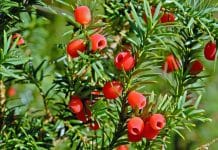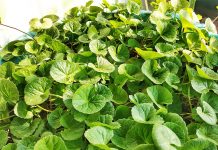Scientific name: Albizia lebbeck (L.) Benth.
Family: Mimosaceae
Synonym: Mimosa lebbeck L.
Bengali/Vernacular name: Kala koroi (Chittagong); Sirish, Harish, Moroi (Sylhet); Bhut koroi (Dinajpur-Rangpur).
Tribal name: Chain (Chak), Koiro (Pangkhoa), Boi gass (Tanchangya), Kalo koror (Manipuri).
English name: Black siris, Siris tree, Parrot tree, Koko, Sizzling tree, East Indian walnut, Woman’s tongues tree.
Description of the plant: A medium-sized to large deciduous tree with rounded spreading crown and pale bark. Leaves bipinnately compound, with 2–5 pairs of pinnae, each pinna with 3–10 pairs of leaflets; leaflets shortly stalked linear-oblong, obtuse to retuse at the apex, unequal at the base, margin entire. Flowers showy, stalked, greenish to yellowish-white, fragrant, in globose umbellate heads. Pods linear-oblong, compressed firm, strap-shaped, straw-coloured, with many seeds; dried pods persistent after leaf-fall, often heard rattling in the wind.

Plant parts used: Bark.
Medicinal uses: Powdered bark is used for ulcers, snake bite and wound.
Powdered bark mixed with egg white and lime then it is applied in fractured bone to treat it.
A paste is made with the bark of the plant is applied on the affected skin once a day until the leucoderma is cured.
Powdered bark is used for brushing teeth twice a day until the toothache is cured.
Juice extracted from bark of the plant is taken for the treatment of diarrhoea and dysentery.
Distribution: This species occurs in most parts of the country, both wild and cultivated.















… [Trackback]
[…] Find More to that Topic: natureinfo.com.bd/albizia-lebbeck/ […]